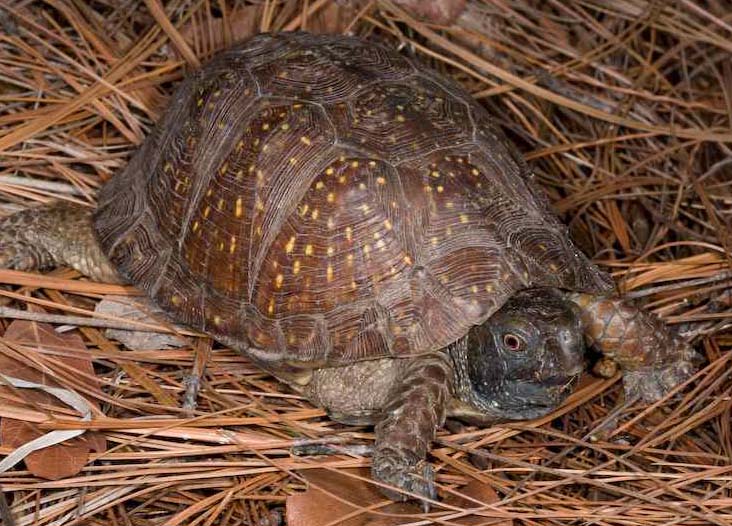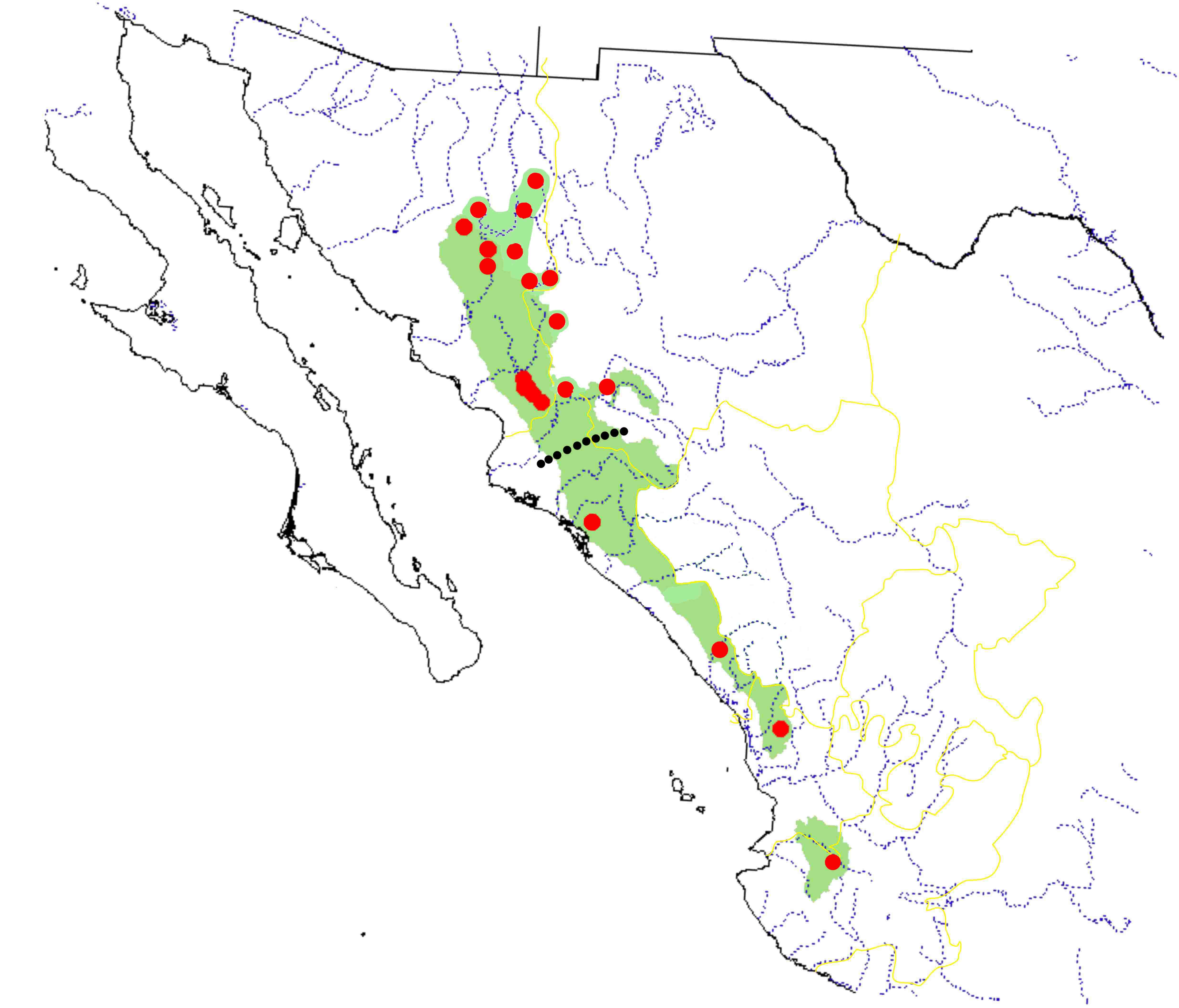Terrapene nelsoni, 060
Terrapene nelsoni Stejneger 1925 –
Spotted Box Turtle, Tortuga de Chispitas, Tortuga de Monte
James R. Buskirk1 and Paulino Ponce-Campos2
1San Antonio Health Center, 1030 International Blvd., Oakland, California 94606 USA [[email protected]];
2Bosque Tropical, A.C. Misión San Antonio, Torre 4a, Depto. 2, Col. Plaza Guadalupe,
Zapopan, Jalisco 45030, Mexico [[email protected]]
Summary. – Known from only a handful of localities in the Sierra Madre Occidental of western Mexico, the Spotted Box Turtle, Terrapene nelsoni (Family Emydidae), remains one of the least known chelonian species of North America. Only at the type locality and at one site in Chihuahua have more than four specimens been recorded, most other records consisting of incidental finds or acquisition of solitary specimens. Population density, natural history, and reproductive parameters are thus not understood, and even the favored microhabitat of the species is uncertain. Often the habitat is of difficult access, precipitous, and the turtles themselves seem to have a short activity season, coinciding with the summer monsoon. Most literature on the species is limited to physical description of specimens, on the basis of which two subspecies have been recognized. Based on comparisons of 32 morphological features, the most recent phylogenetic analysis of genus Terrapene has confirmed the close relationship of T. nelsoni to T. ornata, to which it is parapatric in the northern portion of its range. No threats to the species are currently known, and it is classified as Data Deficient on the IUCN Red List. Monitoring for the possibility of an international pet trade developing would be advisable.
Distribution. – Mexico. Records exist from five Mexican states: Chihuahua, Jalisco, Nayarit, Sinaloa, and Sonora, with those from the latter outnumbering all the others combined. All localities are restricted to the Pacific versant of the Sierra Madre Occidental in montane regions from approximately 450 m to at least 1640 m. It is the only Terrapene species found to the west of the Cordillera. More than 200 km separate the southernmost record for the species (near Guachinango, Jalisco) from the type locality (Pedro Pablo, Nayarit), which in turn lies more than 600 km southeast of the nearest confirmed locality to the north (near Terreros, Sinaloa) suggesting that the species is either more widespread than documented, or that its range is fragmented.
Synonymy. – Terrapene nelsoni Stejneger 1925.
Subspecies. – Two subspecies are currently recognized: Terrapene nelsoni nelsoni (Southern Spotted Box Turtle) (distribution: Nayarit, Jalisco, and southern Sinaloa, Mexico) and Terrapene nelsoni klauberi (Northern Spotted Box Turtle) (synonymy: Terrapene klauberi Bogert 1943) (distribution: Sonora, Chihuahua, and northern Sinaloa, Mexico).
Status. – IUCN 2011 Red List: Data Deficient (DD, assessed 1996, needs updating); CITES: Appendix II, as Terrapene spp.; Mexico: Pr (2.2.4., Subject to Special Protection).
Citation:
Buskirk, J.R. and Ponce-Campos, P. 2011. Terrapene nelsoni Stejneger 1925 – Spotted Box Turtle, Tortuga de Chispitas, Tortuga de Monte. In: Rhodin, A.G.J., Pritchard, P.C.H., van Dijk, P.P., Saumure, R.A., Buhlmann, K.A., Iverson, J.B., and Mittermeier, R.A. (Eds.). Conservation Biology of Freshwater Turtles and Tortoises: A Compilation Project of the IUCN/SSC Tortoise and Freshwater Turtle Specialist Group. Chelonian Research Monographs No. 5, pp. 060.1–060.9, doi:10.3854/crm.5.060.nelsoni.v1.2011, //iucn-tftsg.org/cbftt/.
(Adobe Acrobat 6.0 or later required)

Adult male Terrapene nelsoni klauberi, near Yecora, Sonora.
Photo by Matt Cage.
Distribution:

Distribution of Terrapene nelsoni in Mexico in the states of Chihuahua, Jalisco, Nayarit, Sinaloa, and Sonora (state boundaries in yellow). Southern (T. n. nelsoni) and Northern (T. n. klauberi) subspecies apparently delimited somewhere in the vicinity of the dotted black line. Red dots = museum and literature occurrence records of native populations based on Iverson (1992), plus more recent and authors’ data; green shading = projected native distribution based on GIS-defined hydrologic unit compartments (HUCs) constructed around verified localities and then adding HUCs that connect known point localities in the same watershed or physiographic region, and similar habitats and elevations as verified HUCs (Buhlmann et al. 2009), and adjusted based on authors’ data.








